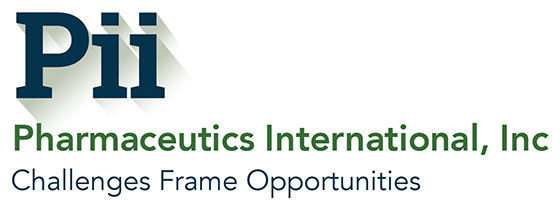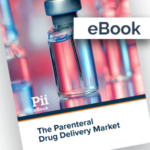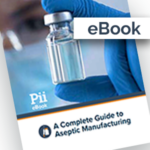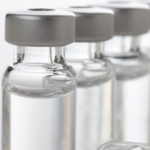Snapshot of the Parenteral Drug Delivery Market
Snapshot of the Parenteral Drug Delivery Market
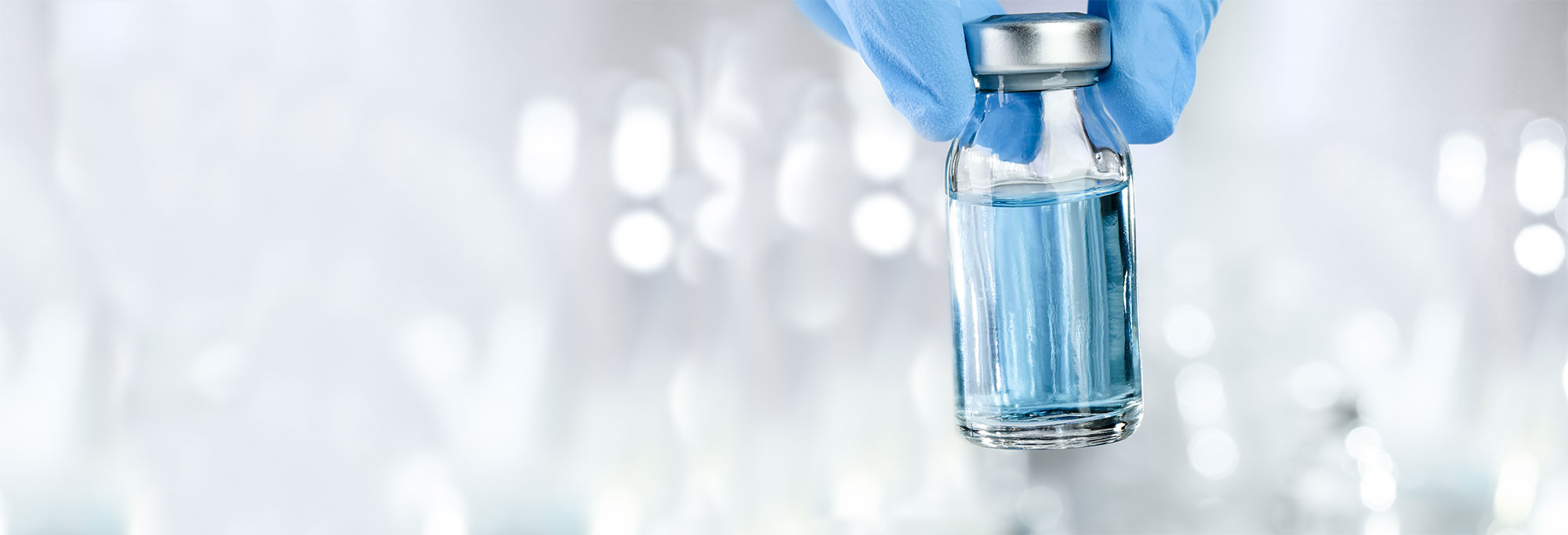
The global parenteral drugs market revenue is expected to reach a value of more than $800 billion by 2029, according to a recent report from Fact.MR.1 The report attributes this to an increased spending on biologics, the need for a faster route of drug administration, and an increasing preference for single-dose administration of vaccines and drugs.
Parenterals are sterile preparations containing one or more active ingredients for administration by injection – the most commonly used and long-lasting method for administration of the drug. Parenteral administration allows direct administration of drug substances and to ensure bioavailability. Growth in the development of parenteral drugs is driving demand for advanced drug delivery devices such as prefilled syringes, auto-injectors, and pen-injectors, growing segments in the fill-finish manufacturing market.2
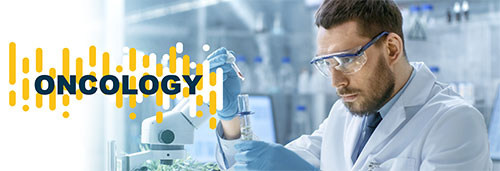
Oncology Dominates the Drug Pipeline
Parenteral drugs, which may be a small molecule or a biologic, are injected into the body typically through three common routes of administration: intramuscular, subcutaneous and intravenous. There were close to 500 parenteral drugs in the pipeline as of 2018 and the proportion of which requiring parenteral administration rose by ~2% from 2018 to 2019, according to the Fact.MR report.
The percentage of parenteral drugs approved as new molecular entities (NMEs) by the US Food and Drug Administration’s (FDA) Center for Drug Evaluation and Research (CDER) has increased over the last several years. Between 2015 and 2019, parenteral drugs have accounted for approximately 40% to 50% of NME approvals. Of the 48 NMEs approved by the FDA in 2019, 20 were parenteral drugs, which represented 42% of NME approvals. In 2018, 23 of the 59 NME approvals were parenteral drugs, which represented 39% of NME approvals, and in 2017, 19 of the 46 NME approvals were parenteral drugs, or 41%.3
Since 2017, many of these NMEs have been focused on specific therapeutic areas: oncology (27.5%), infectious diseases (10.5%), cardiovascular (5.4%), and diabetes (reflected in 56.5% of the market). These segments have a large patient pool that portends significant growth opportunities for therapeutics once they reach the market. Most of these products are in Phase III of the development pipeline.1
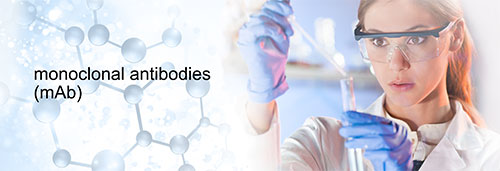
Product and Molecule Type
By product type, monoclonal antibodies (mAb) dominated the global market in terms of revenue, and contributed 21% revenue share in 2022. Revenue from monoclonal antibodies product type segment is expected to expand further, primarily due to bulging product pipelines and increasing product approvals.1
By molecule type, large molecules creates highest incremental revenue opportunity and represent market attractiveness while small molecules is the next lucrative market representing market attractiveness. Large molecules are a key focus of the pharmaceutical industry due to the high biocompatible nature of large molecules. Increased R&D spending in the pharmaceutical industry offers the opportunity for a number of large molecules to enter the pipeline.
Looking at 2022 market share estimates, total market share of both small and large molecules is valued at $531.8 billion; large molecules represent 52.3% of that market and small molecules 47.7%. In 2032, the total molecule market is forecasted reach $937 billion in with large molecules representing almost 62% of the market and small molecules 38.2%.1

Market Potential for Other Parenterals
There is no denying that 2020 was a breakout year for mRNA technology platforms with the launch and widespread use of mRNA vaccines for COVID-19 through 2035. About 77% of mRNA companies have at least one prophylactic vaccine in its pipeline and the majority of prophylactic vaccine revenues will still come from COVID-19 products. At the end of 2019, the combined market capitalization of the five publicly listed companies focusing on mRNA platforms was ~$15 billion. As of August 2021, that capitalization was more than $300 billion.4 This boost in valuation reflects optimism that mRNA technology can deliver more than the current prophylactic COVID-19 vaccines. These include therapeutic vaccines for personalized cancer and single disease-focused products.
In the short term, the mRNA product market is based only on COVID-19 vaccine sales, and we estimate it will be worth more than $50 billion in 2021. Between 2023 and 2025, we anticipate a decline due to decreased need for COVID-19 vaccines in major markets and a lack of new product launches, while booster shots and wider global use may support sales of ~$20 billion. The market is then anticipated to grow from 2028 as other prophylactic vaccines and therapeutic vaccines enter, reaching $23 billion in 2035. Prophylactic vaccines are still expected to be the cornerstone, with more than 50% revenue up to 2035. Therapeutic vaccines for cancer are estimated to contribute ~30% of mRNA product sales.4 Industry is also watching the global market for drugs that are designed to treat rare diseases and receive “orphan” drug designation. The orphan drug category will provide significant growth opportunity for manufacturers of parenteral drugs and is expected to expand at a healthy compound annual growth rate of 12%.1

Strategic CDMO Partners
Increased demand in biologic-based drug development and for COVID-19 vaccines/drugs is driving demand for outsourcing parenteral drug formulation and manufacturing through to fill-finish. The pharmaceutical fill and finish outsourcing market size is projected to reach $4 billion by 2028 from $2.7 billion in 2021.5 According to Contract Pharma magazine, the global pipeline is dominated by complex oncology products and growing rare disease treatments, all of which are based on highly sensitive molecules that are delivered parenterally. This has resulted in a more strategic role for CDMOs that specialize in aseptic fill-finish for injectable medications.
References
- Parenteral Drugs Market Forecast, Trend Analysis & Competition Tracking - Global Market Insights 2019 to 2029, Fact.MR, March 2022.
- Parenteral Market Trends, Kristin Brooks, Contract Pharma, March 8, 2022.
- Tracking Parenteral Drugs in New Drug Approvals, Patricia Van Arnum, DCAT Value Chain Insights, Feb. 12, 2020.
- Evolution of the market for mRNA technology, Wen Xie, et.al., Nature, Sept. 2, 2021.
- Global Pharmaceutical Fill and Finish Outsourcing Markets, 2021-2028: Rising Market Consolidation & Growing Market for Biotherapeutics, ResearchandMarkets.com, March 29, 2022.
Talk to a Pii Scientist
ABOUT Pii
Pharmaceutics International, Inc. (Pii) is a US-based contract development and manufacturing organization (CDMO) located in Hunt Valley, Maryland. The experienced scientists, engineers, and staff at Pii pride themselves on adroitly employing a phase appropriate method of drug development for the prudent use of their customer’s resources as they solve challenging problems. In addition to offering end-to-end development services, Pii manufactures a variety of dosage forms to include complex parenteral drugs and has a wealth of analytical testing capabilities. Its Hunt Valley campus has four aseptic suites with lyophilization capabilities. Our talented professionals stand ready to help!
